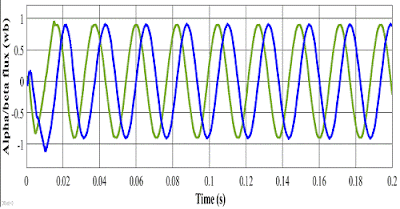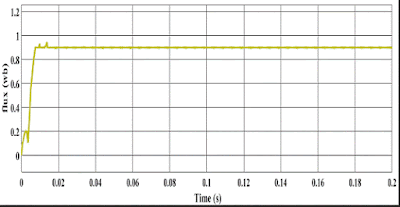ABSTRACT:
This article presents a contribution of the application
of direct torque control, for the control of the powers of a double power induction
generator (DFIG), used in a constant speed wind energy conversion system. This
type of control based on two hysteresis band controllers of torque and flux.
The simulation results showed that it is possible to control the rotor powers
with this method.
KEYWORDS:
1.
DFIG
2.
DTC
3.
WIND TURBINE
4.
GRID
SOFTWARE: MATLAB/SIMULINK
BLOCK DIAGRAM:
Fig.1. Block diagram of DTC.
EXPECTED SIMULATION RESULTS:
Fig.2. The rotor flux sector location.
Fig.3. evolution of rotor flux estimated components.
Fig.4. Waveform of the alpha/beta rotor flux (Wb).
Fig.5. The rotor flux (Wb).
Fig.6. Waveform of the alpha/beta rotor currents
Fig.7. Waveform of the rotor currents and voltages.
CONCLUSION:
This
paper presents the simulation of the direct torque control for a doubly fed
induction generator connected to the grid. The results obtained confirm the
theoretical studies of this commande, and show the effectiveness of the
proposed control strategy.
REFERENCES:
[1]
A. Kadri , H. Marzougui , K. Omrani , F. Bacha, “DTC of Doubly Fed Induction
Generator for Wind Power System based on Rotor Flux Estimation,” International
Confernece on Control Engineering Information Technology. Tunisia, vol. 34, pp.
33-38, December 2017.
[2]
Y. Sahri, S.Tamalouzt, S. L. Belaid, “Direct Torque Control of DFIG Driven by
Wind Turbine System Connected to the Grid,” International Conference on Wind
Energy and Applications in Algeria. Algeria, pp. 88-93, November 2018.
[3]
N. El Ouanjli1 , A. Derouich , A. El Ghzizal , M. Taoussi , Y. El Mourabit, “Direct
torque control of doubly fed induction motor using three-level NPC inverter,”
Protection and Control of Modern Power Systems 4. October 2019
[4]
G.Naveen, P.K.S.Sarvesh, B.Rama Krishna, “DTC Control Strategy for Doubly Fed
Induction Machine,” International Journal of Engineering and Advanced
Technology. India, vol. 3, pp. 92-95, October 2013.
[5]
A. Bakouri, H. Mahmoudi, A. Abbou, “Intelligent Control for Doubly Fed
Induction Generator Connected to the Electrical Network,” International Journal
of Power Electronics and Drive System. Indonesia, vol. 7, pp. 688-700,
September 2016.






